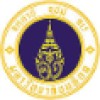Effects of Dual-transcranial Direct Current Stimulation During Physical Therapy in Sub-acute Stroke
Stroke

About this trial
This is an interventional treatment trial for Stroke
Eligibility Criteria
Inclusion Criteria:
- Age range 18-75 years.
- First ever-ischemic lesion in the territory of middle cerebral artery or anterior cerebral artery. CT scan/MRI result is thus required.
- Sub acute phase of stroke (less than 6 months)
- Able to sit-to-stand and stand-to-sit independently
- Able to walk without physical assistance at least 6 m
- Free of any neurological antecedent, unstable medical conditions or condition that may increase the risk of stimulation such as epilepsy
Exclusion Criteria:
- Pre-stroke disability
- Pregnant
- Be unable to understand the instruction
- No clear neurological antecedent history or psychiatric disorder
- Excessive pain in any joint of the paretic limb (numerical pain rating score > 7)
- Presence of intracranial metal implantation, cochlea implant, or cardiac pacemaker
- Subjects are participating in the other protocol or receiving alternative treatment such as acupuncture
Sites / Locations
- Faculty ofPhysical Therapy, Mahidol University
Arms of the Study
Arm 1
Arm 2
Experimental
Active Comparator
Active tDCS & PT
Sham tDCS & PT
Dual transcranial direct current stimulation (tDCS) will be applied over the leg motor area (M1) during the first 20 mins of conventional physical therapy (about 1 hours). Anodal on affected hemisphere, Cathodal on unaffected hemisphere. Current intensity is fixed at 2 mA and current will flow continuously during 20. Physical therapist will give an intervention program exactly the same in all cases. The scope of intervention is administered to improve strength of weakened and postural lower limbs muscles such as trunk muscles, hip flexors/extensors/abductors, knee flexors/extensors.
Dual transcranial direct current stimulation (tDCS) will be applied over the leg motor area (M1) during the first 20 mins (sham mode) of conventional physical therapy (about 1 hours). Anodal on affected hemisphere, Cathodal on unaffected hemisphere. Physical therapist will give an intervention program exactly the same in all cases. The scope of intervention is administered to improve strength of weakened and postural lower limbs muscles such as trunk muscles, hip flexors/extensors/abductors, knee flexors/extensors.
Outcomes
Primary Outcome Measures
Secondary Outcome Measures
Full Information
1. Study Identification
2. Study Status
3. Sponsor/Collaborators
4. Oversight
5. Study Description
6. Conditions and Keywords
7. Study Design
8. Arms, Groups, and Interventions
10. Eligibility
12. IPD Sharing Statement
Learn more about this trial
